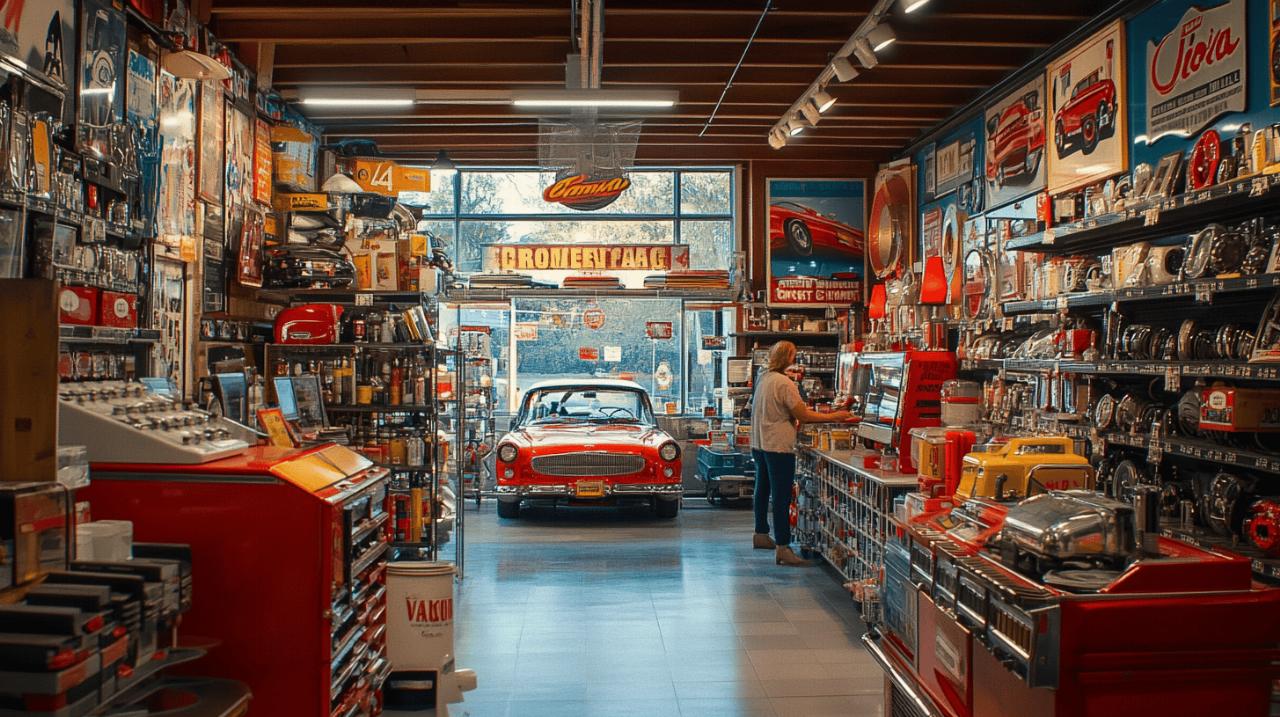How loyalty schemes drive repeat business
Implementing a loyalty programme can significantly transform the profitability of auto parts retailers. These schemes have become increasingly valuable in today’s competitive market, where customer retention often proves more cost-effective than acquisition. According to industry data, the automotive sector has seen brand loyalty rates reach 52.5% in 2024, representing a notable 1.9% increase from the previous year. For retailers specifically, these programmes create structured incentives that encourage customers to return repeatedly, rather than shopping around at competitor stores or websites like metauto.it and other automotive marketplaces.
Creating customer attachment to your brand
Effective loyalty schemes foster a psychological connection between customers and your auto parts brand. This attachment stems from the perceived value customers gain beyond just the products purchased. When enthusiasts feel recognised and rewarded for their patronage, they develop an emotional investment in your business. This sentiment is particularly powerful in the automotive sector, where enthusiasts often take pride in their vehicles and value relationships with suppliers who understand their passion. The sense of belonging to an exclusive community of like-minded auto enthusiasts creates a powerful incentive for continued engagement with your brand.
Increasing purchase frequency and average spend
Well-designed automotive loyalty programs directly influence customer spending patterns. When members know they’re accumulating points toward valuable rewards, they become more likely to consolidate their purchases with a single retailer. Data shows that loyalty programme members typically spend 19.3% more than non-members on monthly transactions. This increased spending comes not only from more frequent visits but also from customers choosing to purchase additional items to maximise point accumulation. For parts retailers, this behaviour proves especially beneficial for driving sales of complementary products and encouraging preventative maintenance purchases rather than waiting for emergency replacements.
Designing rewards that resonate with auto enthusiasts
The success of any loyalty programme ultimately depends on offering rewards that genuinely appeal to your customer base. For auto parts retailers, understanding the specific motivations and desires of vehicle enthusiasts is crucial. Unlike general retail customers, automotive hobbyists and maintenance-focused consumers have unique preferences. They value technical knowledge, quality parts, and solutions that help them maintain their vehicles effectively. Designing a programme that acknowledges these specific interests will significantly enhance its appeal and effectiveness.
Exclusive discounts and early access opportunities
Auto enthusiasts particularly value exclusivity and insider access. Loyalty programmes that offer members early access to new product lines, limited edition parts, or exclusive manufacturer promotions create a powerful incentive for continued engagement. For example, providing loyalty members with first access to seasonal sales on premium brands of filters, oils, or performance parts creates anticipation and rewards programme participation. Additionally, exclusive technical workshops or demonstration events for members can add substantial perceived value beyond simple discounts, fostering a community around your brand while providing practical benefits that DIY mechanics genuinely appreciate.

Tiered benefits that encourage greater engagement
Implementing a tiered membership structure creates aspirational targets that motivate customers to increase their engagement level. Similar to successful programmes like My GM Rewards, which works across multiple brands including Chevrolet and Cadillac, auto parts retailers can design progressive benefit structures that reward increasing levels of customer commitment. Entry tiers might offer basic discounts on routine maintenance items, while higher tiers could include benefits like free oil changes, priority service appointments, or substantial discounts on major repairs. This approach not only incentivises higher spending but also creates clear pathways for customer progression within your loyalty ecosystem.
Leveraging customer data for business growth
Beyond directly influencing purchasing behaviour, loyalty programmes generate valuable customer data that can transform business operations. For auto parts retailers, this information provides insights into vehicle ownership patterns, maintenance schedules, and product preferences that would otherwise remain obscure. When properly analysed, this data becomes a strategic asset for inventory management, marketing, and business development, ultimately creating a more responsive and customer-centric operation.
Understanding buying patterns and preferences
Loyalty programmes reveal crucial information about when and why customers purchase specific auto parts. This intelligence allows retailers to anticipate seasonal demands, stock appropriate inventory levels, and identify emerging trends in vehicle maintenance or modification. For instance, tracking purchase patterns might reveal that certain vehicle models require brake replacements at predictable intervals, allowing for targeted promotions timed perfectly to customer needs. Similarly, understanding which accessories or upgrades are commonly purchased together enables more effective merchandising and bundled promotions that genuinely reflect customer behaviour rather than assumptions.
Personalising marketing efforts based on purchase history
The granular customer data generated through loyalty programmes enables highly targeted marketing that resonates with individual preferences. Rather than sending generic promotions, retailers can craft messages that reflect the specific vehicles a customer owns, their maintenance history, and their demonstrated interests. For example, a customer who regularly purchases performance parts for a specific make and model could receive information about new compatible upgrades, while someone focused on routine maintenance might receive timely reminders and deals on upcoming service needs. This personalisation, when implemented respectfully, significantly improves marketing effectiveness while enhancing the customer experience.
Implementing a successful auto parts loyalty programme
Translating loyalty programme concepts into practical implementation requires careful planning and technological considerations. For auto parts retailers, the specific operational context influences which approach will deliver the greatest benefits. Whether catering to professional mechanics, DIY enthusiasts, or casual vehicle owners, the programme structure must align with both customer expectations and business capabilities to ensure sustainable success.
Digital vs Physical Loyalty Systems for Parts Retailers
Modern loyalty programmes often leverage digital technology through mobile apps and online accounts, offering advantages in data collection and customer convenience. Digital wallets integrated into retailer apps allow customers to track points, receive personalised offers, and access rewards seamlessly. However, physical systems still hold relevance for certain customer segments, particularly older demographics or those who prefer traditional shopping experiences. Many successful auto parts retailers implement hybrid approaches, offering physical loyalty cards that can be linked to digital accounts, thereby accommodating diverse customer preferences while still capturing comprehensive data across all touchpoints.
Measuring roi and optimising your scheme
Continuous assessment of programme performance is essential for maintaining its effectiveness and justifying the investment. Key metrics for auto parts retailers include changes in customer retention rates, average transaction value, purchase frequency, and overall programme participation. Beyond these direct measures, retailers should evaluate the quality of data being gathered and its utility in improving business decisions. Regular analysis allows for timely refinements to reward structures, earning mechanisms, and redemption options. The most successful programmes evolve based on both performance metrics and customer feedback, creating a dynamic system that continues to engage participants while delivering measurable business benefits.




